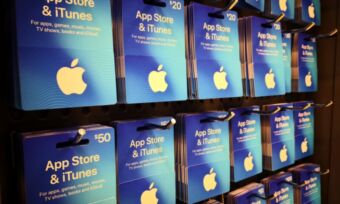What are pay on demand apps?

‘Pay on demand’ apps market themselves as being a quick and easy way to get money you have already earnt. But they can be a “slippery slope”, one financial counsellor warns.
What are pay on demand apps?
Pay on demand apps, or wage advance apps, allow you to receive a portion of your pay immediately, rather than waiting until your next payday.
It is essentially a type of short-term loan and the money you access is usually deducted from your following pay cycles.
But Rob Benton, a financial counsellor at the National Debt Helpline, says people don’t always see it as a debt and this can be problematic.
“Pay on demand apps create this mental image that you are accessing something that is yours, but it is a debt,” Mr Benton told Canstar.
“They are not giving you your pay, they are giving you a loan and they are charging you for it.”
How do pay on demand apps work?
Pay on demand apps can be offered by third party providers (such as Beforepay and MyPayNow), but there are also some pay advance services offered through employers, as well as services offered by the banks (such as CommBank AdvancePay).
Customers are usually charged fees, instead of interest. This is usually about 5% of the amount you advance. For example, if you got a $500 pay advance, you could be charged a $25 fee. If you do this regularly, it can get expensive.
“For products with a 5% fee used weekly, that’s theoretically a 260% fee per annum,” Mr Benton said. “If you use it fortnightly, it’s 130% per annum and it’s still much more expensive than other alternatives.”
What are the risks?
Pay on demand products can be a “slippery slope” and people can amass a significant amount of debt, Mr Benton said, particularly when they have multiple debts like payday loans, buy now pay later and credit cards.
Some customers may also use pay on demand products to pay for their everyday living expenses. Beforepay founder Tarek Ayoub previously told Yahoo Finance that most of their customers spend the advances on groceries and transport.
Like buy now pay later, pay on demand products are not currently covered by the National Credit Code, because they do not charge interest on repayments. That means consumers don’t have protections like affordability checks, financial hardship assistance and access to external dispute resolution.
“Where you don’t have consumer protections, there is a lot more chance of people getting into difficulty and they are not protected by the laws that they have with credit cards and personal loans,” Mr Benton said.
Most services do not do a credit check on you and instead require proof that you are steadily employed and meet their minimum income requirements. Some services will accept Centrelink payments as part of your income.
Pay on demand apps do bear some resemblance to payday lending, as some critics have pointed out. With payday loans, customers can be charged an establishment fee of 20% of the amount borrowed and a monthly fee of 4% of the amount borrowed.
Mr Benton says he would like to see some tightening of consumer protections, and advocacy groups like the Consumer Action Law Centre and the Financial Rights Legal Centre have also called for regulation of the sector.
What pay on demand apps are available in Australia?
There are a number of pay on demand services available in Australia. This includes pay on demand apps that consumers can access themselves, as well as employer-offered services.
We’ve compared some popular pay on demand apps, as well as CommBank’s pay advance offering. We’ve focused on the direct-to-consumer apps, rather than the employer-offered services.
Compare pay on demand apps
Beforepay
- Fee: 5%.
- Loan amount: $50 to $1,200.
- Repayment options: Up to four pay cycles.
- Eligibility: Must be employed and earn over $300 per week after tax.
CommBank AdvancePay
- Fee: $5 for every $500 (or part of). If you don’t repay on time, you will be charged interest at the debit excess interest rate (currently 14.90% p.a.) and your account will be considered overdrawn.
- Loan amount: $300 to $5,000.
- Repayment options: Next pay date.
- Eligibility: Must have income regularly paid into a CommBank account and earn enough income to meet the $300 minimum limit.
MyPayNow
- Fee: 5%.
- Loan amount: $50 to $1,250 (up to 25% of wage).
- Repayment options: Next pay date.
- Eligibility: Must be employed and earn at least $450 a week after tax.
Source: Provider websites.
What are the other options?
Pay on demand apps can be expensive if used regularly and there may be cheaper alternatives you could consider.
If you use a pay on demand product more than once or twice, Mr Benton recommends contacting a financial counsellor.
“It’s a free service and they can help you address the underlying issues or help you access other cheaper options,” Mr Benton said.
If you are receiving Centrelink payments, Mr Benton said you could consider applying for an advance payment. For example, people who receive JobSeeker can apply for advances between $250 and $500. You then pay it back later out of your Centrelink payments.
If you are on a low income, you may be eligible for a no interest loan of up to $1,500. This can be used to purchase essentials and there are no interest, fees or charges. You can apply by visiting the no interest loans (NILS) page on the Good Shepherd website and by calling your local NILS provider.
To speak to a financial counsellor, you can call the National Debt Helpline on 1800 007 007.
This article was reviewed by our Deputy Editor Sean Callery and Sub Editor Jacqueline Belesky before it was updated, as part of our fact-checking process.






